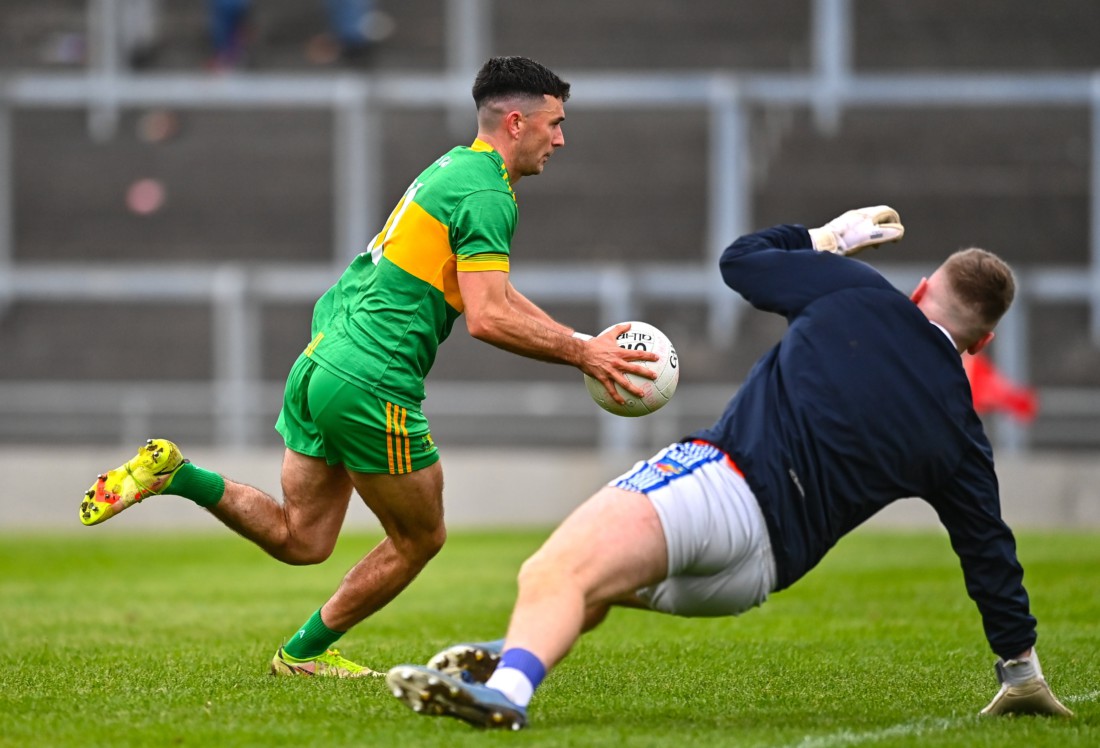By Patrick Morrison
AS a Gaelic enthusiast, it is great to see so many well taken three-pointers but on the flip side, as a goalkeeper it can be disheartening to see so many goals conceded, especially those that could be dealt with more favourably with a more proactive approach.
Of course, there is never any guarantee that any goal can and will be prevented but there are actions a goalkeeper can take to give them more of an advantage when facing attackers one on one.
At the weekend, I was again helping Kilcoo with their quest to retain their Ulster Club title. We had all seen the goal threat that Ballybay carried against Crossmaglen in the preliminary round as they cut through the Cross defence on a number of occasions raising two green flags.
Keeping to their character they again broke through the Kilcoo rear guard last Sunday on few occasions but to Kilcoo’s delight they were able to stem those goal threats brilliantly.
Two such instances were due to the excellent goalkeeping from Niall ‘Bobo’ Kane who closed the attacker swiftly, making telling blocks on both occasions.
These were important blocks as conceding either would have allowed Ballybay to grow in confidence and pose a greater threat as the game progressed.
The sixth principle of my 11 goalkeeping principles that I teach is called ‘Close the Gap,’ and it deals with whenever a goalkeeper is in a one-on-one situation with an attacker. The principle states:
“Close down attackers through on goal as early as possible. If you can, anticipate the final pass to the attacker who will be through on goal and time your advance accordingly.
“When rushing the attacker always ensure you move ‘in the line and down the line’ of the shot to ensure you ‘take the space’ of the attacker getting as close to them as you can before a shot is taken.
“Rushing the attacker like this, hurries their decision making changing its nature from logical to impulsive, giving you the advantage. Once you engage the attacker do not back off or retreat into your goals until they have passed the ball on or have been dispossessed.”
The great Peter Schmeichel once said in an interview that whenever he rushed out at an opponent he did so not trying to save or block the ball. He said his main purpose when rushing an attacker through on goal was to take as much of their focus away from their intended shot as possible and transfer that focus onto himself.
The more focus he transferred onto himself, the more chance that I have of making the save or block. This, he said, was because the more the attacker focused on him, the more likelihood the attacker was to shoot the ball straight against him as this is where their focus had been redirected.
For any situation when an attacker is through on goal in a one-on-one situation it is critical for the goalkeeper to get themselves as close to the attacker as possible before the shot is taken by keeping themselves In the Line of the shot and move down the line of the shot to gain closer proximity to the shooter.
This ‘situation’ is the most common form of goal that is scored within Gaelic football. A worked move usually ends with the final attacker through on goal one on one with the goalkeeper.
The goalkeeper’s game awareness and positioning are crucial here, simply because they need to be fully aware of what exactly is happening and must position themselves in such a way that allows them to still cover their goal but also the potential final pass to the final attacker.
After this comes timing. The goalkeeper must time his rush on the attacker in conjunction with the final pass to the final attacker. Once the goalkeeper reads that the final pass will be taken, they then must rush as close to the final attacker as they possibly can either before or just as the final pass is arriving. When the shooter catches the final pass, you revert to your ‘set’ position regardless of the distance between both of you.
Once you get as close to the shooter as you can the aim now is to force them into a hurried or panicked shot giving you the greater advantage to make the save.
By staying on your goal-line or not reducing the ‘gap’ between you and the shooter enough, will only give the advantage to the shooter meaning the shooter still has enough options to allow them to hold the balance of power in this situation.
To ensure you gain an advantage in your one-on-one situations you must always close the gap.
Email: pmgoalkeeping@hotmail.com
Facebook: @MSoG11
Twitter: @MorSchGk
Receive quality journalism wherever you are, on any device. Keep up to date from the comfort of your own home with a digital subscription.
Any time | Any place | Anywhere












